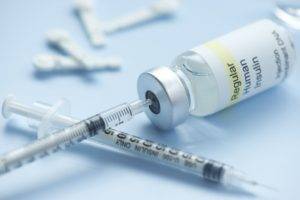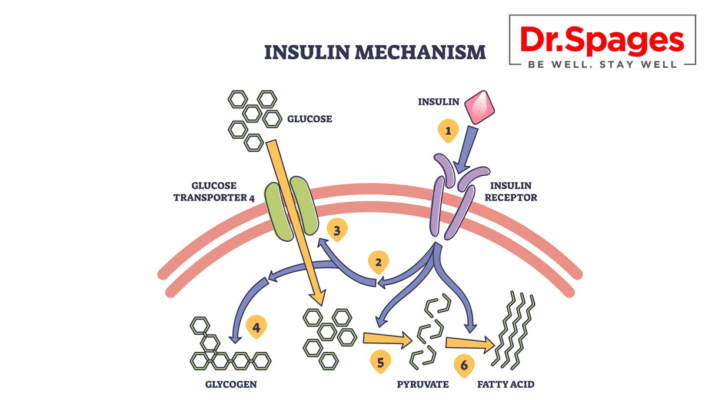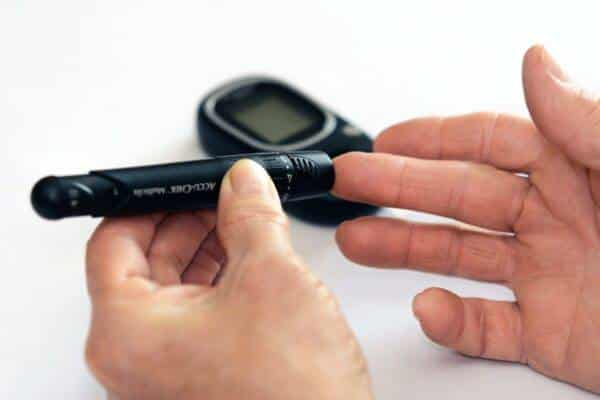
Breaking the Cycle of Type 2 Diabetes: How to Get Started
Breaking the Cycle of Type 2 Diabetes: How to Get Started

Beginning is difficult, particularly if you have no idea what to do first. In this blog post, we’ll discuss the causes of type 2 diabetes and provide concrete advice for overcoming the disease and potentially reversing it like my patients.
Normal lifestyle changes including eating well and exercising regularly, as well as measuring and managing blood sugar levels and taking prescribed medications, will all be discussed. We will also discuss the value of getting help from healthcare providers, loved ones, and friends, as well as the significance of self-care and stress management in diabetes.
The benefits of succeeding in breaking the cycle of type 2 diabetes are substantial, but the work required is considerable. You may take charge of your health and lower your chance of long-term consequences from type 2 diabetes by adopting a healthy lifestyle and making proactive decisions. Read on to learn the first steps toward improved health, whether you’ve just been diagnosed with type 2 diabetes or have been dealing with it for a while.
Get Educated
By learning more about type 2 diabetes, you can take the first step in breaking the cycle of type 2 diabetes. High blood sugar levels due to a lack of insulin or improper insulin utilization define type 2 diabetes, a metabolic condition. You basically have a “broken metabolism”. Millions of individuals all around the globe are living with this ailment since it is persistent.
Obesity, inactivity, family history, ethnicity, and age are only few of the risk factors for type 2 diabetes. Those with type 2 diabetes may have increased urination, thirst, tiredness, impaired vision, and a delay in wound healing. Remember that high blood sugar levels, aka diabetes, is a symptom.
Understanding the causes and effects of type 2 diabetes is crucial for either avoiding or dealing with the condition. Centers for Disease Control and Prevention can help you find answers however they don’t discuss the root causes.
Managing your blood sugar levels, creating a healthy meal plan, and developing an exercise routine that works for you are all things that your healthcare provider or a diabetes educator can help you with but that still doesn’t fix or address how you developed this broken metabolism.
Knowing more about type 2 diabetes can help you take better care of yourself if you have it. Spend time learning about reversing diabetes, asking questions, and reaching out for help from medical experts who know how to address the root cause. Include loved ones in your health goals, and even consider getting the “drug approach” from diabetic support organizations. Taking responsibility for your health and ending the vicious cycle of type 2 diabetes begins with knowledge.
Make Healthy Food Choices
Managing type 2 diabetes requires a commitment to making appropriate eating choices. Maintaining a healthy weight, managing blood sugar levels, and avoiding diabetic complications may all be aided by eating a well-rounded diet. A simple course to learn the basics of reversing diabetes might be a good start. Click here for more information
Here are some guidelines for selecting nutritious meals:
Focus on Fiber
Pick high-fiber options like fresh produce. Blood sugar levels may be maintained with the aid of fiber, which slows the release of sugar into the circulation. Check out recipes books here
Limit Processed Foods
Many processed meals are heavy in fat, sugar, and salt, all of which may increase the risk of weight gain and hypertension. Avoid processed meals and opt for whole ones instead.
Choose Lean Proteins
Although proteins are necessary for tissue maintenance and repair, certain food options are heavy in saturated fat and should be avoided. Make chicken, fish, seed, and nuts your go-to options for protein.
Watch Your Carbohydrates
It is important to keep an eye on your carbohydrate consumption since they may swiftly spike blood sugar levels. Reduce your intake of simple carbs like sweets and soda and increase your consumption of complex carbohydrates like fruits, and vegetables. Once someone reverses their disease their diet will allow for more carbs and potentially sugar.
Use Healthy Fats
Fats are necessary for energy production and nutrient absorption, yet there are certain fats that should be avoided. Limit your intake of saturated and trans fats by opting for healthier fats like those found in olive oil, almonds, and avocados.
Control Portion Sizes
Overconsumption of any food group may cause weight gain and hyperglycemia. Control your portion amounts by eating out of smaller containers and measuring glasses. Once a patient has gone through the Metabolic Clearing Program their cravings greatly change. It’s almost a miracle from the patient’s prospective. Learn more about the Metabolic Clearing Program here
Stay Active
Maintaining physical activity is an important element of controlling type 2 diabetes. Maintaining a healthy weight, good cardiovascular health, and stable blood sugar levels are all aided by regular exercise. Some suggestions for physical activity:
Find Activities You Enjoy
Find something you really like doing, like walking, swimming, dancing, or gardening, and make it your physical activity. You’ll be more likely to keep up with your workout plan if you do this.
Aim for at Least 30 Minutes a Day
It is recommended that you exercise for at least 30 minutes on most days of the week, at a moderate level. Shorter sessions may be held if needed. Many diabetics should NOT exercise however that can only be seen with very specific labs and a proper analysis by someone who does functional medicine.
Strength Train
Exercises that increase muscular strength and insulin sensitivity include weightlifting and the use of resistance bands.
Be Active Throughout the Day
Find methods to be active all day long, including walking instead of using the elevator or parking farther away from your destination.
Monitor Your Blood Sugar Levels
It is crucial to check blood sugar levels before and after exercise because of the potential impact on blood sugar. If you have questions about how often you should check your blood sugar or what changes you should make to your diet or medication, see your doctor.
Consider Working with a Professional
Your requirements and skills may be taken into account when designing an exercise program by a licensed personal trainer or diabetes educator. Understand that exercise might not be the right strategy in the beginning since it could create more insulin resistance and create more metabolic problems.
Monitor Your Blood Sugar Levels
The management of type 2 diabetes relies heavily on careful monitoring of blood sugar levels. I prefer to suggest reversing it and getting to the root causes. By doing regular and comprehensive lab tests, you may learn how your body reacts to various stimuli including food, drugs, and exercise. Some helpful hints for keeping tabs on your blood sugar levels are as follows.
Use a Glucometer
A glucometer is a handy tool for checking your blood sugar levels everywhere you go. Take care of your gadget by keeping it clean and maintaining it as directed.
Keep a Log
If you have diabetes, monitoring your blood sugar levels may help you see trends and make informed decisions about your food and exercise regimen. Use a notepad or a smartphone app to keep track of your readings.
Test at Different Times
Before each meal, after each workout, and before going to bed are all good times to check your blood sugar. Learn how your blood sugar levels change throughout the day by doing this.
Be Prepared
In case of an unexpected situation, always have a glucose meter and testing equipment on hand.
Take Medications as Prescribed
Managing type 2 diabetes effectively requires strict adherence to drug regimens. A diabetic patient can manage blood sugar, blood pressure, and the risk of problems with proper medication. Just because someone is managing does not mean they are fixing the root causes. Some advice on how to take drugs should be consulted with your doctor however consider the following:
Keep Track of Your Medications
Document the names, amounts, and schedules for all of your drugs. You won’t miss any dosages if you keep track of them this way.
Set Reminders
If you have trouble remembering to take your prescription at the appropriate times, set alarms or reminders on your phone or computer.
Don’t Skip Doses
Blood sugar levels might vary, causing difficulties, if you miss a diagnose. If you miss a dosage and recall it later, take it as soon as possible or as directed by your doctor.
Store Medications Properly
Keep your medicines out of the light and in a cold, dry area. If there are specific directions for storage, follow them.
Talk to Your Healthcare Provider
Consult your doctor if you have any concerns regarding the effects of your drugs. They will be able to change your dose or provide other options if necessary.
Get Support
It is crucial to your success in controlling type 2 diabetes to seek out assistance. It may aid in maintaining motivation, encouraging healthy lifestyle choices, and mitigating the emotional toll of dealing with a chronic illness. Some suggestions on how to get help:
Join a Support Group
Type 2 diabetics might benefit greatly from joining a support group. You’ll find a supportive community where members are willing to listen and provide advice. Remember they are going to discuss managing diabetes and not reversing it. Join my private facebook group to align with Diabetic who want to reverse diabetes. Find local support groups by asking your doctor for referrals or going online.
Talk to Friends and Family
Share your diabetes diagnosis with loved ones and explain how they can help. They might provide you with moral or practical assistance while you work to improve your health.
Work with a Diabetes Educator
A diabetes educator can advise you on how to best manage your condition and provide guidance and resources. Find diabetes educators in your region by asking your doctor for a referral or going online.
Use Technology to Break the Cycle of Type 2 Diabetes
You can keep track of your diabetes and stay in touch with other people with the aid of a wide variety of applications and web resources. Check out the app store for tools that may help you keep tabs on your sugar levels, keep track of what you eat and how much exercise you get.
Stay in Communication with Your Healthcare Provider
When it comes to controlling your diabetes, the advice and encouragement of your healthcare practitioner may be invaluable. Be careful to ask questions and voice concerns during your scheduled checkups. If you would like to reverse diabetes you came to the right place. Feel free to ask questions or learn more here.





